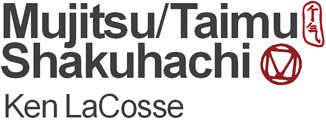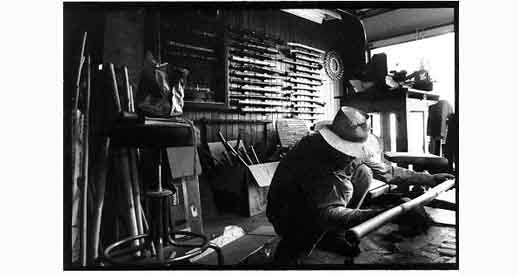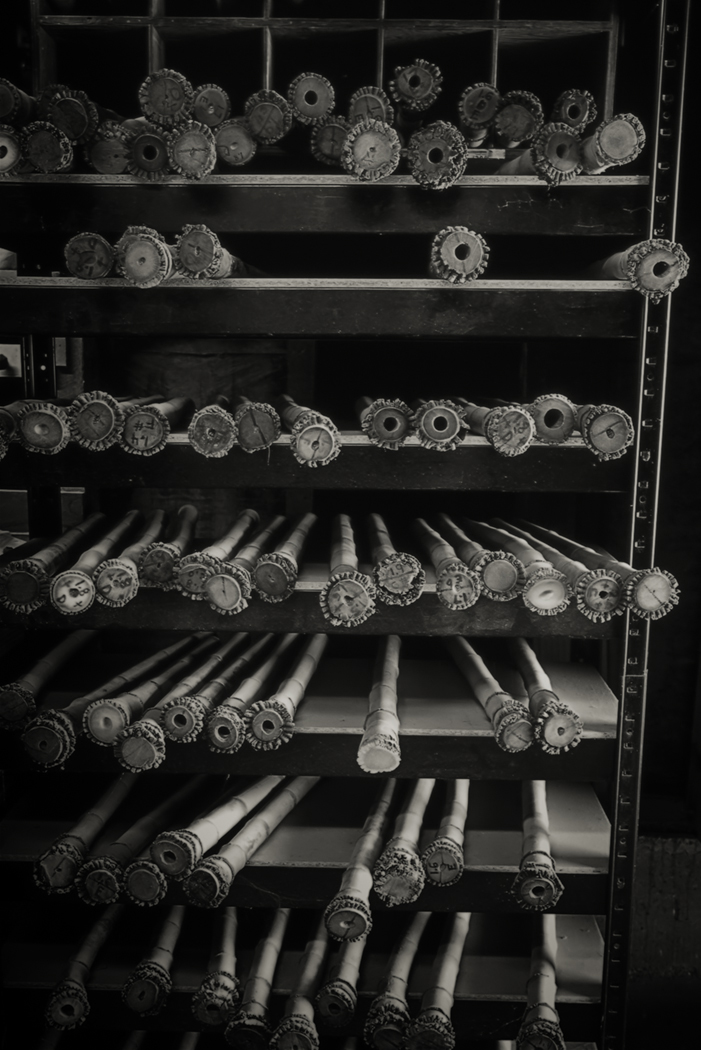
home
flutemaking approach
shakuhachi in stock
other shakuhachi
repair
order
contact
taimu shakuhachi
news
flute bags

| Flutemaking Approach One of the most fascinating and perplexing qualities of the shakuhachi is that there are so many ways to experience it. This simple instrument satisfies approaches from the most scientific to the most spiritually esoteric. Just as there are many approaches to playing this instrument, there are also many ways to make it. One way is to fill the bore of the instrument to predetermined measurements (addition). Another method is to use the natural bore of the bamboo and remove material where needed (subtraction). Sometimes dabs of material (ji-paste) are used in the bore to refine the tone. I prefer working with the natural bore of the bamboo (ji-nashi method) for a number of reasons. I enjoy the warm, resonant depth of tone found in this style. I also enjoy the individuality of each flute as well as the method of construction. I've been fortunate to have the opportunity to play and study many fine vintage ji-nashi flutes from the ever changing collections of John Singer and Brian Tairaku Ritchie. These flutes, as well as John and Brian's comments and suggestions regarding my own work, continue to inspire me. Mujitsu Shakuhachi Translated, Mujitsu alludes to the contrast/connection between emptiness (mu) and form (jitsu). The term is especially relative to these particular flutes because of the nature of their construction. The emptiness (bore) and the form (bamboo) are equal, interdependent partners. Mujitsu Shakuhachi are made using a hand adjusted bore technique. Bore adjustment is the most important stage of shakuhachi construction. A shakuhachi maker slowly develops this technique over the years primarily through the heightened intuitiveness of experience. This method begins with the natural shape of the bore of the bamboo. Left in this form, a shakuhachi may play with a pleasing, natural, warm tone. However, it will most likely lack tone balance throughout the instrument. There may also be some tuning problems between the octaves. In order to solve these problems, the flute usually needs meticulous adjustment by adding and/or subtracting space (preferably as little as possible) at key areas along the length of the bore. The adjustment continues until the tuning is corrected and the tone quality is balanced. I've found some of the best flutes often appear by working entirely by subtraction. (without adding any ji paste to the bore) The challenge is to produce a technically sound flute which retains it's original, individual voice. For me, this technique satisfies aesthetic and philosophical concerns regarding my idea of what the shakhachi is and what makes flutemaking an enjoyable discipline to be involved in. Aesthetically, I enjoy the sound of these flutes. There is a warm, natural resonance and soul found in these flutes which is satisfying. I appreciate the unique, individual voice that each piece immediately reveals. Some soft, sweet, delicate; some full, windy or bright. It's become clear that my job is to help each voice along rather than force a predetermined voice into the bamboo. Philosophicaly, I'm pleased that, by using this method, the bamboo matters. The bamboo is entirely functional, and not primarily a vessel used to contain a pre-determined set of measurements. Each piece is different, and must be approached individually. No two flutes made in this way have the same bore measurements. Basically, this flutemaking approach comes down to doing as little as possible to each piece, thus allowing it to reach its individual potential. Although the best flutes usually have very little bore adjustment, it often takes weeks or months to achieve. It is a slow and tedious process which I enjoy. Taking a long time to make a shakuhachi means it is handled more, played more, and hopefully understood more. There are many ways to make shakuhachi. This is the particular mindset I enjoy working within. The bamboo and the emptiness are clearly the teachers here, and this method simply facilitates in persuading one this is the case. Bamboo  Mujitsu shakuhachi are made from excellent quality, 35 year old Madake bamboo, harvested in Japan. They are very well cured and highly resistant to splitting. Bamboo of this quality is very rare. First, each piece must exhibit superior exterior characteristics such as roundness of culm, proper node placement, rich color and beauty of rootend. In addition to meeting these exterior criteria, the size of the natural bore is critical. The natural bore size must be such that only the smallest possible additions (if any) are necessary to improve the tone. |
Ken LaCosse 415 242-0919 email